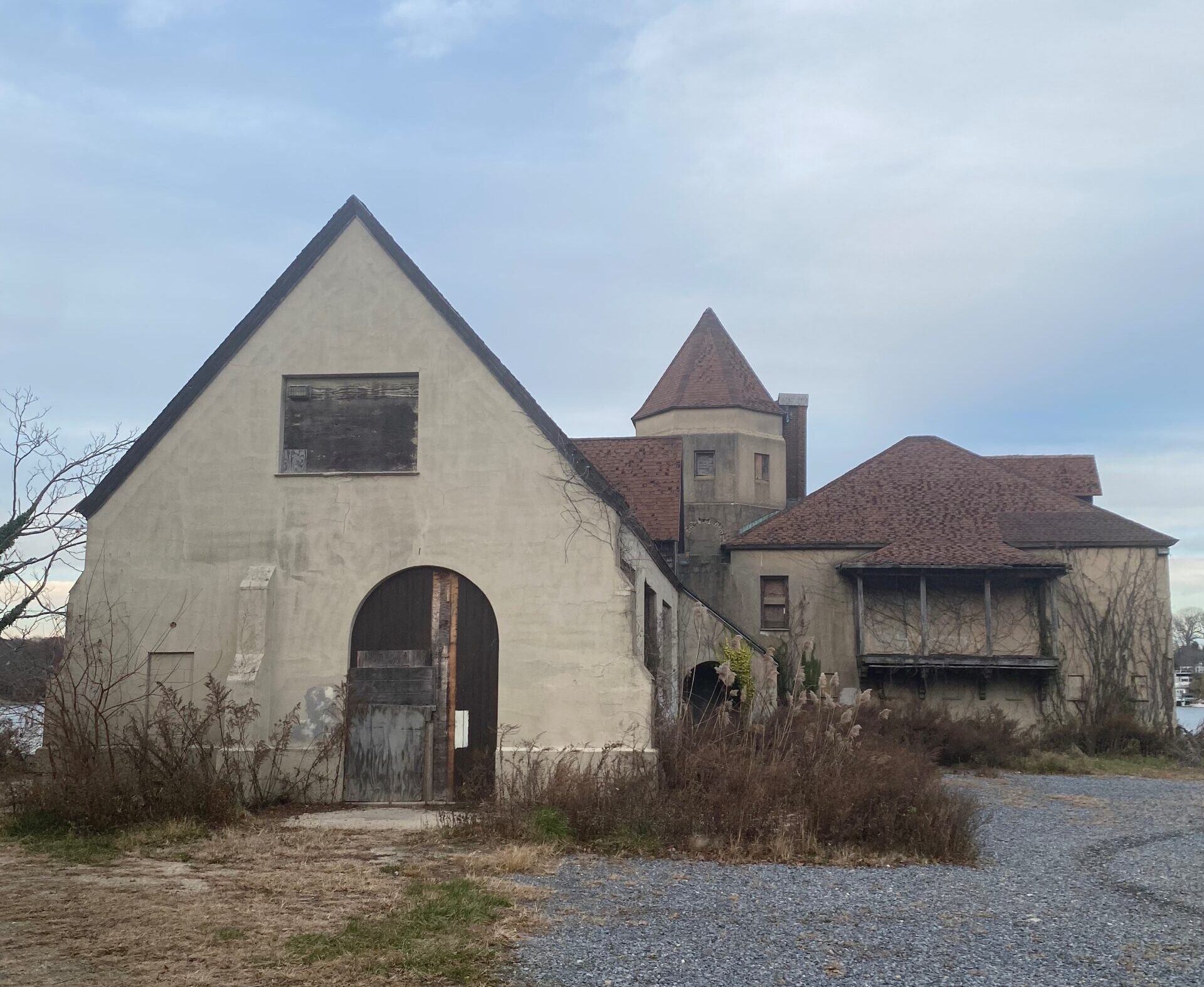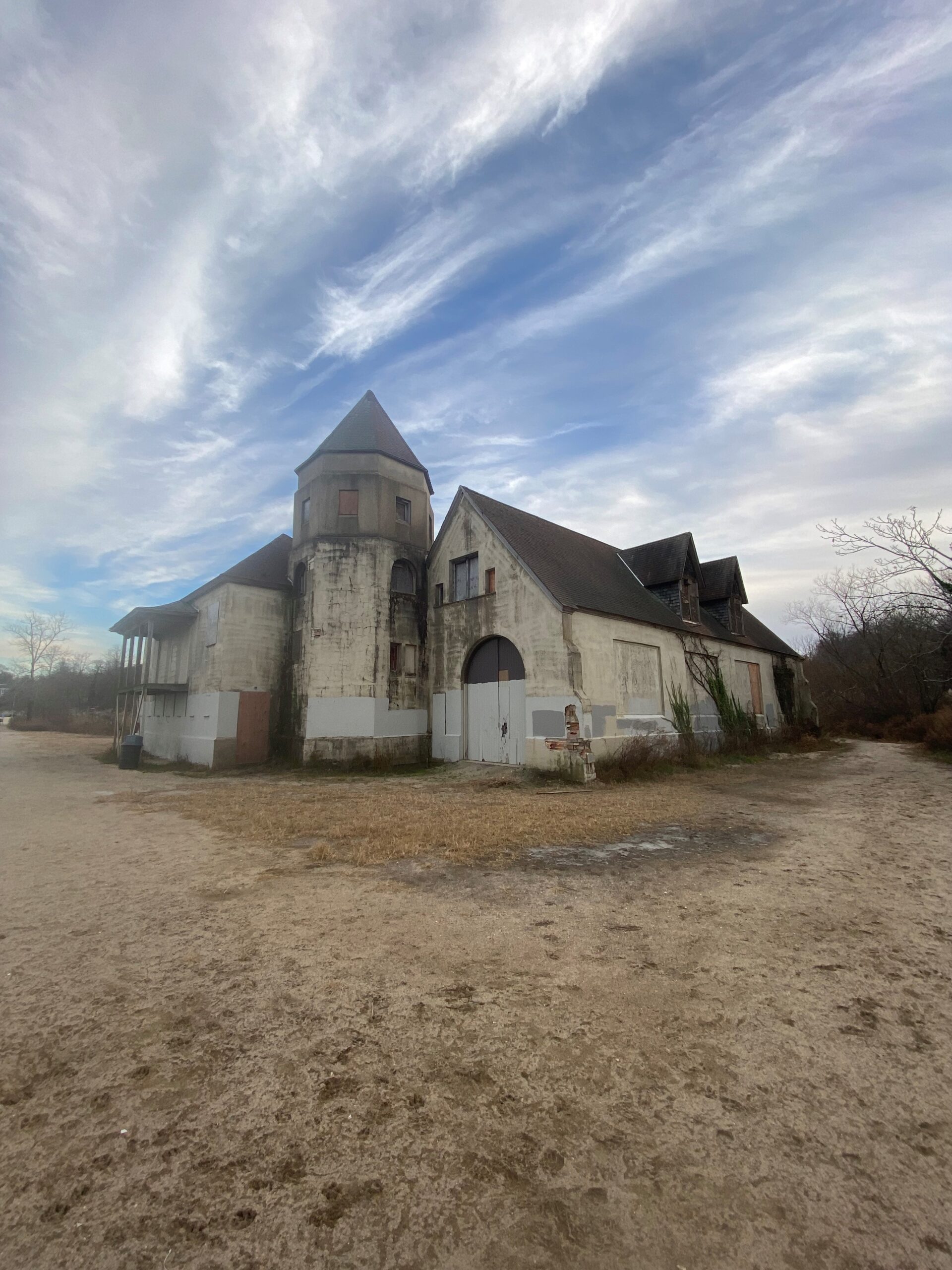Why is the Coindre Hall Boathouse historically significant?
Coindre Hall was originally known as West Neck Farm when it was constructed in 1912 for pharmaceutical magnate George McKesson Brown by the noted architect Clarence Sumner Luce. The approximately 135-acre estate consisted of numerous buildings, including a boat house. The boat house is modeled after the Main House, which, in turn, is modeled after a chateau in the south of France. The Main House has been restored and is used for hosting weddings and events. The boat house has remained vacant for many years, and its seawall suffered significant damage during Superstorm Sandy.
In the 1930s, the estate was divided, and the Main House, along with a portion of the property, including the boat house, was sold to the Brothers of the Sacred Heart. The estate was then renamed Coindre Hall in honor of Father Andre Coindre, the founder of the order. The school operated as a boarding school for approximately 30 years and later as two other schools, both of which eventually closed. In 1972, Suffolk County acquired the property, and in 1991, the Alliance for the Preservation of Coindre Hall Park was founded. The estate was listed on the National Register of Historic Places in 1985.
Why is the Coindre Hall Boathouse endangered?
In 2020, the Suffolk County Legislature passed a resolution for the creation of an Advisory Board tasked with the rehabilitation and revitalization of Coindre Hall, which includes saving the boat house, securing the pier, and repairing the damaged seawall. Substantial repairs to the seawall have already been completed. Advisory Board recommendations include the restoration and stabilization of the boat house. With the support of the Advisory Board, the building appears to have a promising future, however funding and broad community support to guarantee its success are lacking. Neighbors concerned about the park’s natural features, such as wetlands, need to be assured that preservation of the boathouse would not be at the expense of preserving the natural environment. Creating a plan that combines the both the natural and cultural goals for the boathouse and the park is crucial to its success.
Preservation Recommendations:
Continue to hold community forums to encourage communication between the Advisory Board and concerned individuals. Create a plan for the park which incorporates both a historic preservation plan and a plan for natural conservation. Invite interested community groups to participate in the development of this plan, so that there is consensus on the future of the park and use of the boathouse.
What can the public do to support the boathouse restoration?
- Attend the quarterly Coindre Hall Advisory Board meetings. The next meeting is Tues, 3/19 at 7:00 pm at Coindre Hall, 101 Browns Rd Huntington. The schedule and past meeting minutes can be found at https://www.scnylegislature.us/1187/Coindre-Hall-Advisory-Board
- Contact Legislator Stephanie Bontempi to ask questions and show your support ([email protected] or 631 854 4500)





